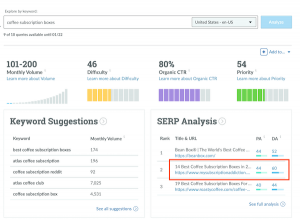Most metrics and analytics ignore conversions on cellphones. Is your ROI calculation completely wrong?
In 2017, digital ad spending in the United States will exceed TV ad spending for the first time. And, by 2020, marketers will spend 36 percent more on digital than on TV. Those predictions are a powerful testament to the importance digital advertising has in modern marketing.
Still, as spending on digital channels increases, so does pressure on marketing teams to prove and improve ROI; and that can be a challenge. A recent survey found that 89 percent of participating marketers didn’t think their digital marketing efforts were working. For marketers struggling to increase ROI from search, Facebook, display and other digital channels, the problem might not be their ads. The problem might be their data.
Benchmark data such as CPL (cost per lead) and CPA (cost per acquisition) help take the guesswork out of decision-making by enabling marketers to optimize for what’s really driving leads, customers and revenue. But this only works if the data is accurate; and, unfortunately, many marketers have a blind spot in their data that is causing CPL, CPA and other ROI metrics to be off by as much as 50 percent or more.
The unexpected impact of call conversions on ROI.
The problem, simply put, is the smartphone. It has transformed the way consumers research purchases and engage with businesses online. The result is that today, instead of following the traditional desktop-centric path of converting by filling out a web form on a landing page, smartphone users are converting simply by calling. According to research by analyst firm BIA/Kelsey:
- Search, social and display advertising will drive over 108 billion call conversions to U.S. businesses in 2016.
- That number will grow to 162 billion calls by 2019.
- Search advertising alone will drive over 40 billion call conversions in the United States this year.
- Calls convert to revenue 10 times more than web leads and will influence over $ 1 trillion in U.S. commerce this year.
Despite the significant and growing role call conversions play in digital marketing success, many marketers have been slow to adjust. They still calculate the ROI of their digital campaigns using web forms as the sole conversion metric. Call conversions remain a blind spot.
Mixed results for marketers ignoring call conversions.
If you are one of these marketers, there’s good news and bad news. The good news is that the CPL and CPA of your digital campaigns are actually much lower — perhaps 50 percent lower — than you’ve been reporting. Your marketing is driving more conversions and business than you think, and part of your struggle to increase ROI is simply your failure to account for a large chunk of your conversions.
The bad news, however, is that you’ve been making budget-allocation and campaign-optimization decisions based on incomplete and potentially misleading data, which could mean you’ve been investing in campaigns, ads, keywords and content that are all underperforming. That has most likely cost you conversions and customers.
Call conversion attribution data can increase leads.
This was a problem Sylvan Learning’s marketing team members knew they had to fix. Sylvan provides personal tutoring services to children in grades K-12, and its marketing team uses search, social and other digital advertising to drive student enrollments for over 750 locations across North America.
Leads convert either by filling out an online form or calling their closest Sylvan location; and in order to optimize spending for maximum return, the company’s marketing team needs to know which campaigns, ads and search keywords drive the most enrollments, regardless of how the lead converted.
Sylvan was getting that data for online conversions from Google Analytics, but the company had no insight into how its digital marketing was driving call conversions. So it adopted DialogTech, a call attribution platform, to see exactly which campaigns and keywords were driving calls and enrollments for each location. That call data gets passed into Google Analytics, to enable Sylvan to get a complete understanding of how different channels drive online and offline conversions.
By eliminating its call-conversion blind spot and optimizing for what has really been driving results, Sylvan has been able to drive 33 percent more leads without increasing CPL.
What data should marketers capture for call conversions?
There is a wealth of data marketers can capture from call conversions that will help improve marketing ROI. It includes:
- Marketing source that drove the call: Knowing the channel, ad, keyword search, email and/or campaign that drove each call is critical to knowing how to optimize spending and messaging to drive more.
- The caller’s path through your website: If a lead visited your site after running a search or engaging with your marketing, you should know that person’s entry page, the content he or she viewed on your site and in what order, and the page he or she eventually called from.
- Caller data: You should capture who the caller is, the phone number, the geographic location, the day and time of the call and the particular browser used.
- What happened on the call: Knowing who answered the call, how long the call lasted, and what was said can help you judge lead quality and gain insights into your customers, to improve messaging and keyword targeting. These revelations can also tell you if sales agents are following approved scripts or mentioning your new promotions.
- The value of the call: You need to know if a call is “good” or “bad,” based on your business’s definition of a quality lead. That often means knowing if the call resulted in an appointment, opportunity or sale, and how much revenue it was worth.
Attribution has become the most important challenge in digital marketing, and smartphones have only made it more difficult by making calls the conversion of choice for many consumers. For marketers, eliminating the blind spot that calls create in your data is a necessary first step in improving ROI and becoming the true revenue-generator their businesses need them to be.
Digital & Social Articles on Business 2 Community(69)
Report Post





